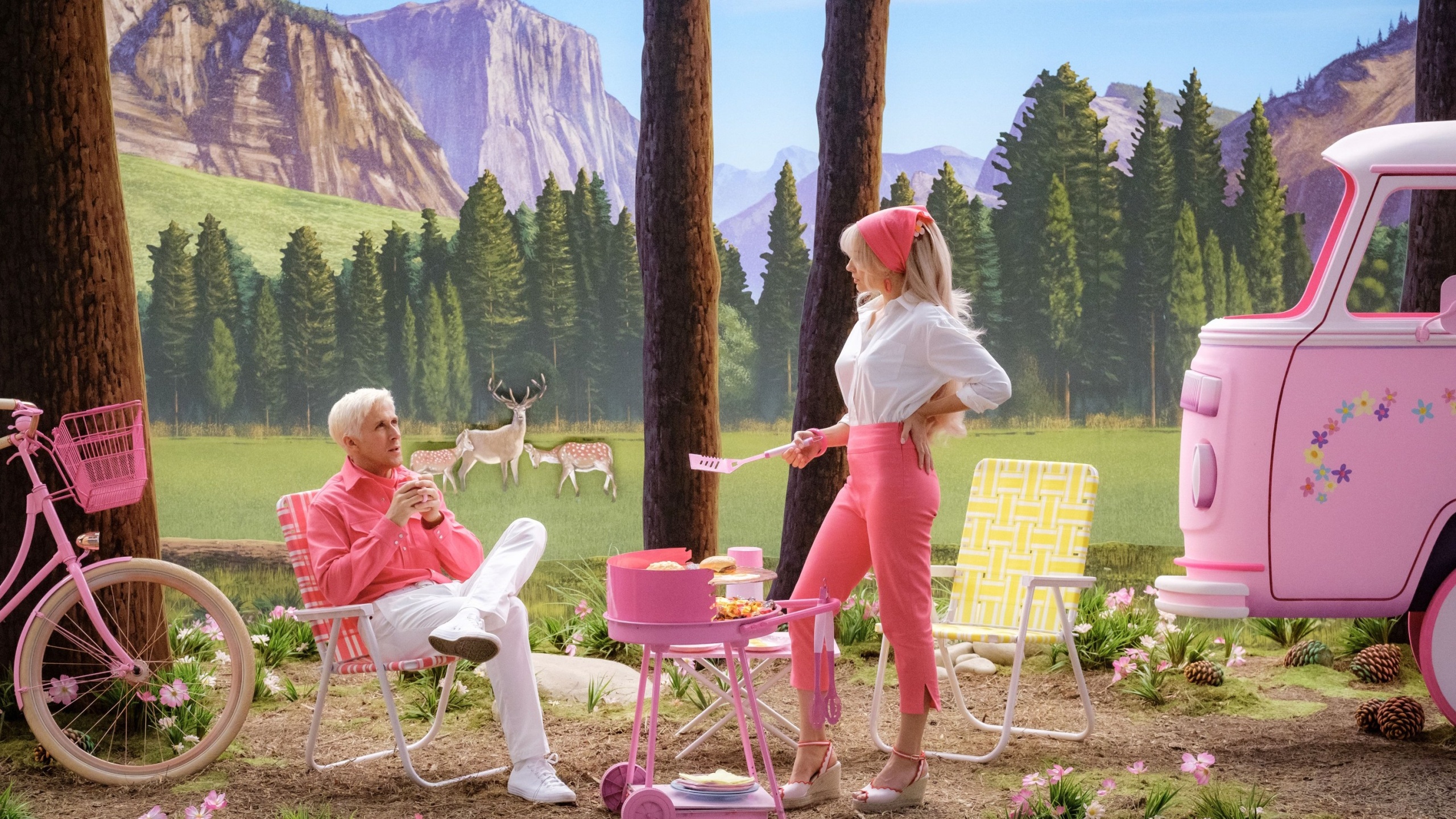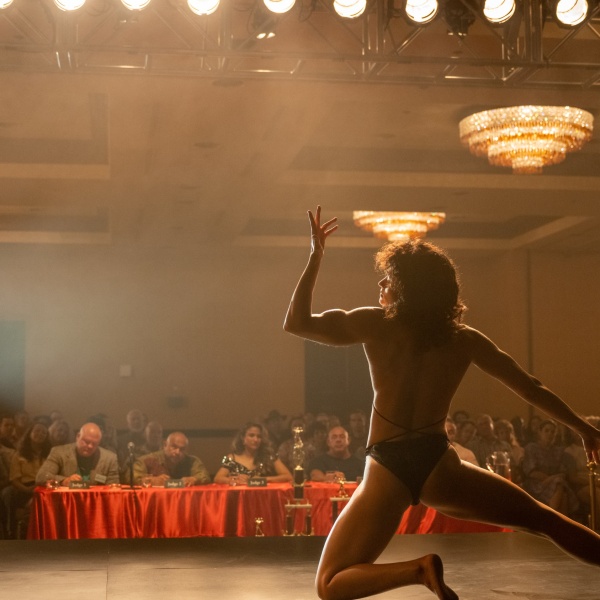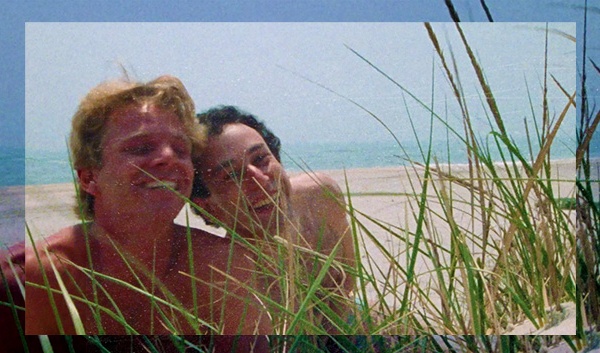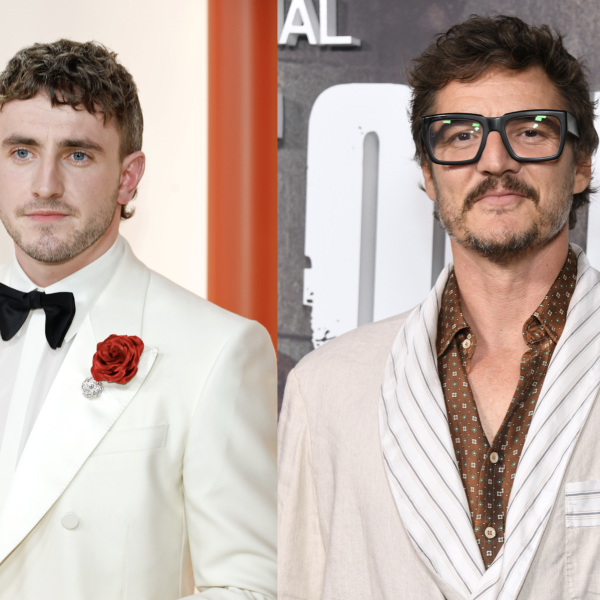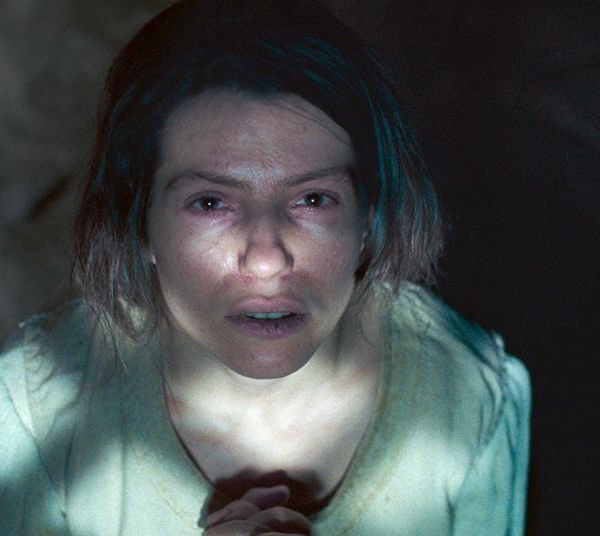“Deep Dive” is an in-depth podcast and video essay series featuring interviews with the stars and creative team behind an exceptional piece of filmmaking. For this edition, the IndieWire Crafts and Special Projects team partnered with Warner Bros. to take a closer look at “Barbie” with director and co-writer Greta Gerwig and nine members of her creative team who breathed life into the iconic Mattel doll.
The tagline “Barbie is everything” turns out to be pretty apt. “Barbie” contains within it multiple kinds of high-concept comedy, musicals, action sequences, mother-daughter stories, and a liminal void wherein Barbie (Margot Robbie) can meet her maker, Ruth Handler (Rhea Pearlman), and elect to transcend toyhood to become a human woman. All in less than two hours!
That “Barbie” contains so much and accomplishes so much — stylistically, tonally, and emotionally — is a huge credit to co-writer and director Greta Gerwig and her creative team, who had to keep track (with apologies to the Daniels) of everything, everywhere, all at once. Making “Barbie” look effortless and fun was a complex task that evolved over the course of creating the movie.
In IndieWire’s “Deep Dive” podcast, we talked to Gerwig, editor Nick Houy, and co-composers/songwriters Mark Ronson and Andrew Wyatt about how the music of the film evolved based on the songs written for it, and how that musical heart helped inform everything from the Mattel boardroom to Ken’s (Ryan Gosling) final statement on himself. You can listen to the podcast above or by subscribing via Apple Podcasts or Spotify.
The work of swinging so big conceptually and yet keeping “Barbie” grounded emotionally is present in every facet of “Barbie”: from the music to the heightened design of Barbie Land to the journeys the characters take in the “real world” to how Ken acts as a counterpoint to Barbie. In the videos below, we explore how the film achieved its tonal balance and emotional depth with Gerwig and nine members of the “Barbie” creative team.
Adventures in Moviegoing: The Film Foundation of Gerwig’s Dreamhouse
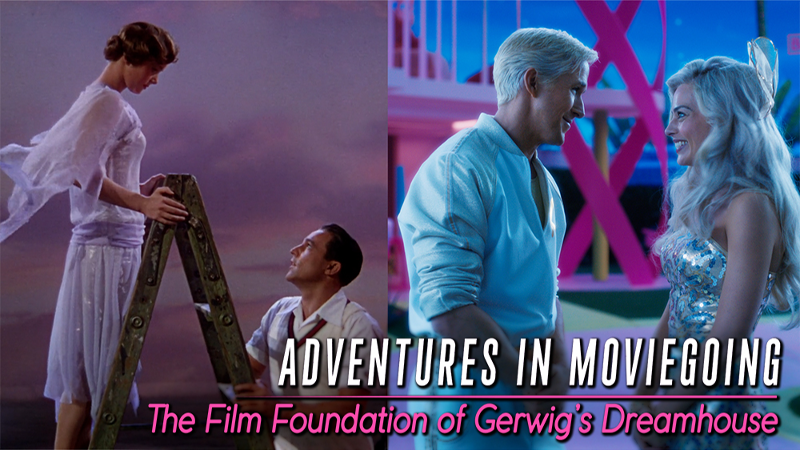
Referentiality is a tricky thing. As much as seeding little nods and homages to things outside of the scope of a film’s plot can make for nice, memetic moments of connection and shared understanding, they can also feel like homework. But with “Barbie,” it’s perhaps more accurate to say that, instead of a lot of references to Freed Unit musicals or Jacques Tati comedies, Gerwig’s film uses cinema history as the building blocks with which it constructs the world of the film.
“In some way, because ‘Barbie’ had so much to do with childhood, it felt like only correct to me to connect it to what I loved as a child. And what I loved as a child were these soundstage musicals,” Gerwig told IndieWire. Those musicals have a heightened and constructed look; it’s very clear that Gene Kelly and Cyd Charisse are not actually on location in Scotland for “Brigadoon,” but when Vincente Minnelli has so ruthlessly organized the color of that set to mirror the love between the characters, who cares about Scotland?
It’s this constructed ethos that Gerwig brought to the idea of Barbie Land itself, and that ripples outwards into all the other corners of “Barbie.” “This idea of artificial authenticity: not shying away from showing that we’re in a studio. And it is something I thought beautiful, because when we’re kids and we play, you’re imagining everything. You’re creating these worlds and they’re in your mind and you’re clearly working with something fake. And I thought that bringing that concept to the movie was appropriate,” said cinematographer Rodrigo Prieto.
Audiences don’t need to have seen “American In Paris” or the dream ballet from “Singin’ in the Rain” — although if you have, there’s an added layer of delight to watching Ryan Gosling’s Ken replicate it. What “Barbie” gives its audience is permission to love a world that is constructed but whose emotions mirror our own. In the video above, watch Gerwig break down how, like Gene Kelly building a romantic scene for Debbie Reynolds in “Singin’ in the Rain,” the love language of “Barbie” is cinema.
‘Now Feel’: Barbie Discovers Her Humanity
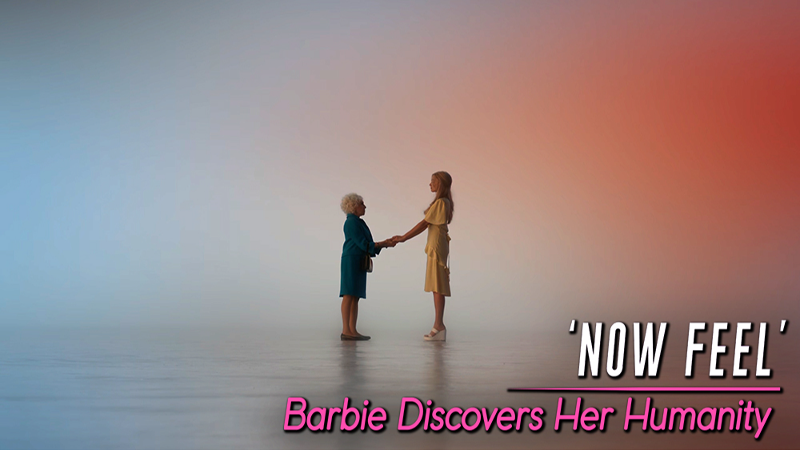
“Barbie” has a lot going on from the start — it doesn’t get any bigger than replicating the opening of “2001: A Space Odyssey” to dramatize how dolls have been utilized for the socialization of limited gender roles in girls from time immemorial. But the biggest thing in “Barbie” is the emotional journey of Barbie herself.
“Barbie is an object without a character or story that you project onto. And I wanted to use that to pull off this hat trick of then doing something that’s actually emotional and big and has depth and is the story of Barbie, but it’s also the story of all of us,” Gerwig said.
To pull that off, the film must plant currents of doubt and anxiety underneath the cheerful perfection of Barbie Land and find wordless ways to articulate a desire that Barbie herself doesn’t have a name for. Some of this is done through adjustments to Barbie’s look and the rhythm of the edit. But a lot of it ended up being done through music, as co-composers/songwriters Mark Ronson and Andrew Wyatt wove the song in Barbie’s heart — “What Was I Made For?” by Billie Eilish — into the score long before the track actually appears.
In the video above, watch how Gerwig, Ronson and Wyatt, editor Nick Houy, cinematographer Rodrigo Prieto, sound designer/supervising sound editor/re-recording mixer Ai-Ling Lee, and hair and makeup designer Ivana Primorac all approached the simmering build-up of Barbie’s humanity over the course of the film.
Plastic Fantastic: Barbie Land’s Artificial Authenticity

The counterpoint to Barbie’s growing humanity is the joyous plastic perfection (every day is the best day ever!) of Barbie Land itself. But what Barbie Land would look like, how the filmmakers could actually shoot a toy world with real actors, how it would relate to the “real world,” and how Barbie would travel between them were all questions that Gerwig and her creative team needed to answer.
“What’s the nature of the doll? What’s the nature of the place they live in? You can’t run before you can walk on this one because there’s no point of reference, there’s no genre that we are into,” production designer Sarah Greenwood told IndieWire. So Greenwood, along with set decorator Katie Spencer, set a number of physical rules and limitations based on the logic of how children play with toys. Even costume designer Jacqueline Durran emphasized the toy nature of Barbie dolls. “You don’t aim to feel a human body inside [the Barbies’] clothes, so that they become quite graphic in shape. Barbie’s costume is quite boxy, and the skirt is structured, so it stands away from her,” Durran told IndieWire.
While cinematographer Rodrigo Prieto ended up building seven giant “suns” above Barbie Land so that the characters would always be backlit — there are no shadows in Barbie Land — Greenwood created sets that would have a physical reality up to a point, then melt into the pretend that powers Barbie Land. A (pink) wall demarcates what is real; after that point, the sets become two-dimensional. “Hence, you’ve got the palm trees, you’ve got the layers of mountains, and then you hit the sky, which is 50-foot high, 800-foot long around the studio. And that’s your world,” Greenwood said. “And then we reduced the scale by 23 percent of human scale. It meant that the actors looked bigger, which makes it more toy-like.”
In the video above, watch how Greenwood, Spencer, Durran, Prieto, hair and makeup designer Ivana Primorac, and sound designer/supervising sound editor/re-recording mixer Ai-Ling Lee all built a studio box that is the perfect home for the Barbies (if not always for the Kens).
Blond Fragility: How Ken Becomes Kenough

As “Barbie” itself points out, a relentless focus on just Barbie isn’t healthy or better than our own world’s determination to see straight white men as life’s main characters. Throughout the film, Ken is an essential counterpoint to Barbie; just as she is pulled into the human world, he is pulled towards his own form of self-actualization. His just involves a surprising amount of horses and Matchbox 20.
Bringing a heightened sensibility to Ken’s brush with the patriarchy and Barbie Land’s descent into Kendom is how the “Barbie” creative team escalates the film’s comedy and visual style; they do this by evolving the time periods they pull from for Ken’s (and Kendom’s) style, effectively upgrading him from a background extra in “Grease” to the star of “Cobra.”
“At the time, in the ‘80s, we thought we were watching movies that were realistic. Actually, they were very highly designed. And it was also quite a pleasing time for movies and male action actors. Lots of floppy hair. So to kind of make that into a toy world, I thought was very appropriate and very funny,” hair and makeup designer Ivana Primorac told IndieWire.
“He is like your worst younger brother or your worst boyfriend,” production designer Sarah Greenwood said. “He pushes her stuff to the side, and all of his stuff is just applied on top. So there’s no interior decoration sense in Ken.” Costume designer Jacqueline Durran added that the fun of Ken wasn’t just the absence of design sense (or taste). It was the chance to create layers and layers of Ken’s raging, childish id, one that visually cuts any appeal of the patriarchy down to size. “The thing about Ken is that he has no subtlety to what he does. He just layers and layers it on. He always feels like more is best. So he doesn’t have one watch, he has three. He has two pairs of sunglasses. So it’s all about this crazy appropriation of something that he feels will give him meaning,” Durran told IndieWire.
In the video above, watch how Primorac, Greenwood, Durran, set decorator Katie Spencer, editor Nick Houy, cinematographer Rodrigo Prieto, and co-composers/songwriters Mark Ronson and Andrew Wyatt all help Ken break Barbie Land so that it (and he) can be something better.
VIEW ALL DEEP DIVE COVERAGE




